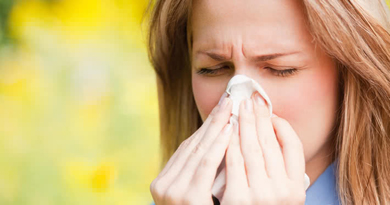With the annual changes in season, the burden of allergic diseases in India has been on an uprising trend in terms of prevalence as well as severity. Allergic rhinitis (commonly known as hay fever) is one of the most common allergic diseases worldwide, affecting about 10-25% of population. It is one of the top ten reasons for visit to primary care physicians. As a precautionary method, there is increasing evidence that people can alleviate this problem by using HEPA technology air purification solutions at home or in the workplace to create safer indoor havens.
Commenting on this, Arvind Chabra, Country Head Blueair India, said, “It is very essential to identify the Invisible dangers. Breathing in tiny, unseen pollutants puts every individual at risk. Air purifiers are one of the effective solutions to keep the indoor air healthy at all times. With superior HEPASilent™ technology, Blueair air purifiers empower individuals to take control of their indoor air by removing 99.97% of the air pollutants that cause respiratory illness and other diseases.”
Mr. Chabra, further added, “According to a recent test carried out by the independent, accredited test institute CAS Test Technical Services in China, the Blueair Classic 280i and 205, removed H1N1 influenza A/PR8/34 with a clearance rate of over 99.99% after 60 minutes, as well as Staphylococcus aureus, Escherichia coli and Aspergillus.”
Dr. Samir Garde, Consulting Chest Physician at Global Hospitals, added saying that, “Taking adequate precautions are one of the best ways to avoid pollution related allergic diseases. With annual changes in the season, there has been a spike in the no. of cases with allergic diseases. In the past decade an increasing number of studies have highlighted that the particulate matter is a serious health threat which can be life threatening in many ways. The levels of particulate matter (PM) 2.5 have serious health implications as these tend to get lodged in the lung and can even enter the bloodstream.”
Many studies in the past identified that indoor air can be 5 times or more polluted than outside. Other than dust there are also particles and gases from everyday household products, such as cleaning supplies, paint and varnish to floors, carpets and upholstery treated with stain protectors, etc. In addition to these, the outdoor pollution such as pollen, vehicle exhaust and industrial contaminants that sweep in makes the quality of indoor air more dangerous and increases the risk of respiratory diseases and allergies.





